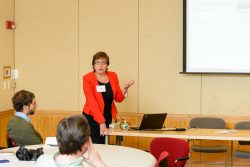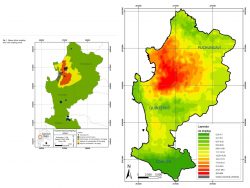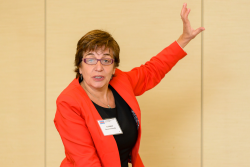Researchers from 6 chilean universities, under the leadership of CIESAL, publish important research work
3/11/2023
The journal Environmental Geochemistry and Health, a Dutch journal published by Springer, has just published the article Oxidative damage associated with exposure to heavy metals present in topsoils in central Chile, which deals with the association between the presence of heavy metals in the area of Quinteros and Puchuncaví and the oxidative balance of the people living in that area.
This study, led by Eva Madrid, a researcher from CIESAL, is the second to show associations between the presence of heavy metals and any element that could be considered harmful to the health of people in that area. For at least two decades, it has been assumed and commented that pollutants from the energy-industrial core of Ventanas may be exerting some kind of damage in the population living around the complex, but only a previous article (by the same team of researchers) has managed to show some kind of effect (see post).

The researchers mapped soils with more than 600 samples, establishing arsenic, lead and copper concentration maps for three municipal districts: Quinteros, Puchuncaví and Concón. Red zones were then established as those that greatly exceeded the permitted limits for the presence of these metals, and green zones as those that maintained heavy metals at levels within acceptable ranges using international soil standards (Chile does not have standards for maximum concentrations of metals in soil).
Subsequently, 280 permanent inhabitants who had resided in the area for more than five years were sampled: 140 volunteers from the red zone were compared with 140 inhabitants of green zones to establish whether there was free radical damage in the tissues and cellular components of the exposed individuals.
Free radicals are unpaired electrons that make molecules unstable. Free radicals sometimes accumulate in cells and damage other molecules, such as DNA, lipids and proteins. Although the human body has several defence mechanisms against free radicals, this damage (called oxidative damage) is responsible for cellular ageing and may increase the risk of cancer and other diseases.
The project evaluated three variables: oxidative damage to lipids, antioxidant capacity of individuals and DNA damage. It was determined that there was no relationship between living in the area and presenting oxidative damage to lipids, and the antioxidant capacity was conserved among people living in polluted or green areas.

However, it was possible to establish–through the measurement of metabolites of guanine, a DNA molecule–that the inhabitants of red zones present a much higher level of damage to their genetic material. Preliminary results of these studies have been presented by Dr. Madrid to the community of Puchuncaví and Ventanas, as well as some international presentations, including the University of New South Wales in Sydney, Universidad Autónoma de Barcelona and the Department of Environmental Epidemiology at Harvard University.
Also participaited in the project Isabel González from PUCV, an environmental engineer who led the soil sampling and analysis, Dr Sergio Muñoz from UFRO, Dr Juan Reyes from the Chemistry Institute of PUCV, Dr Felipe Martínez from Universidad Andrés Bello, Dr Felipe Cardemil from Universidad de Chile, Dr José Pino from Universidad de Atacama, and Dr Sebastián San Martín from the Biomedical Research Center of the School of Medicine at Universidad de Valparaíso.



